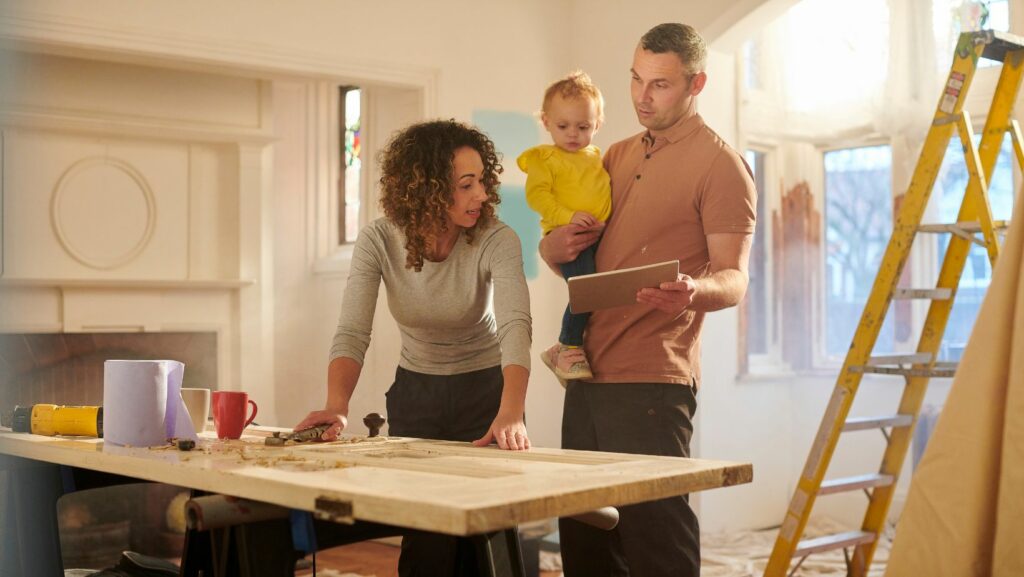Transforming a room doesn’t have to drain your wallet or involve complex renovations. With the rise of DIY room makeovers, anyone can revitalize their living space, infusing personality and style without the hefty price tag. Whether it’s a splash of paint, some cleverly chosen new furnishings, or a complete thematic overhaul, the power to refresh your home is literally in your hands.
These projects not only make your spaces more visually appealing but also enhance the functionality and comfort of your home. From beginners to seasoned DIY enthusiasts, there’s a project for every skill level and budget. So, why wait for a professional when you can take control and create a space that truly feels like yours? Dive into the world of DIY room makeovers and discover how simple changes can make a significant impact.
Do It Yourself Room Makeovers
Benefits of DIY Makeovers
 Engaging in DIY room makeovers offers several advantages, enhancing not only the space itself but also providing personal satisfaction. One significant benefit is cost savings. Individuals save money by performing their own labor and choosing materials that fit their budget. For example, opting for paint and basic tools rather than hiring a professional can reduce costs substantially.
Engaging in DIY room makeovers offers several advantages, enhancing not only the space itself but also providing personal satisfaction. One significant benefit is cost savings. Individuals save money by performing their own labor and choosing materials that fit their budget. For example, opting for paint and basic tools rather than hiring a professional can reduce costs substantially.
Another advantage is customization. DIY projects allow creators to tailor their space exactly to their preferences, whether they’re aiming for a minimalist style or eclectic decor. This personal touch transforms a room into a reflection of one’s own style and comfort.
Moreover, undertaking DIY projects can also lead to an improvement in practical skills. Handling various tools and materials teaches valuable building and design techniques that can be applied to future projects. Additionally, the process of planning and executing a makeover can enhance problem-solving skills and boost creativity.
Planning Your Makeover
 Effective planning is the cornerstone of a successful DIY room makeover. The first step involves setting a clear objective. What is the main goal of the makeover? Whether it’s to brighten a dark room or to make a small space appear larger, having a specific target in mind guides all subsequent decisions.
Effective planning is the cornerstone of a successful DIY room makeover. The first step involves setting a clear objective. What is the main goal of the makeover? Whether it’s to brighten a dark room or to make a small space appear larger, having a specific target in mind guides all subsequent decisions.
Next, one must create a detailed plan. This includes budgeting, which involves determining how much money one can realistically spend on the project, and scheduling, which outlines the timeline for completing various stages of the makeover.
Choosing the right materials is also critical. Quality should meet the needs of the project without exceeding the budget. For instance, one might choose durable paint for walls in high-traffic areas or invest in high-quality brushes for detailed artwork.
Finally, preparing the space ensures that the actual makeover runs smoothly. This involves clearing out furniture, protecting surfaces that are not being worked on, and gathering all necessary tools and materials beforehand, making the process more efficient and preventing unnecessary disruptions.
Key Steps in DIY Room Makeovers
Assessing the Space
 Assessing the space serves as the foundation for any DIY room makeover. First, one needs to measure the room accurately to understand its dimensions thoroughly. This measurement provides insights into how much material you’ll need and helps in furniture placement planning. Next, identifying natural lighting sources helps decide color schemes and lighting fixtures that enhance the room’s aesthetics and functionality. Finally, evaluating existing elements such as flooring and wall condition informs whether repairs or replacements are necessary.
Assessing the space serves as the foundation for any DIY room makeover. First, one needs to measure the room accurately to understand its dimensions thoroughly. This measurement provides insights into how much material you’ll need and helps in furniture placement planning. Next, identifying natural lighting sources helps decide color schemes and lighting fixtures that enhance the room’s aesthetics and functionality. Finally, evaluating existing elements such as flooring and wall condition informs whether repairs or replacements are necessary.
Designing the layout involves visualizing and planning the arrangement of elements within the room. Using sketches or digital design tools, one can map out placements for furniture and fixtures to optimize space utilization and create appealing flow throughout the room. Key considerations include ensuring enough walkable space, positioning furniture for functionality and comfort, and creating focal points that draw attention, such as a feature wall or an art piece.
Selecting Materials and Tools
Selecting the right materials and tools is crucial for executing the room makeover effectively. Materials must align with both the aesthetic vision and functional requirements of the space. For example, hardwood floors or carpeting choices depend on the room’s use, and paint types vary based on the desired finish and room conditions. One must also acquire the correct tools for tasks such as painting, installing fixtures, and assembling furniture. Investing in quality materials and reliable tools can significantly affect the project’s outcome and durability.

